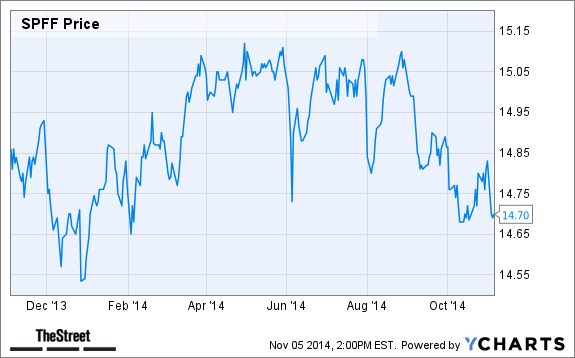Best ETF Strategy Now High Yield Low Volatility Investing Daily
Post on: 27 Май, 2015 No Comment

By Philip Springer on November 29, 2011
Cash pays almost nothing, and even U.S. Treasury securities maturing in 10 years yield about 2 percent. A $10,000 investment in a 10-year Treasury note would lock in only $200 a year of income.
That works out to a negative return after inflation (currently running at a 3 percent-plus pace) and taxes (at a federal rate of up to 35 percent).
Worse, once you buy, your income can never go up. And you face the risk of losing money when interest rates rebound.
In contrast, shares of many financially strong U.S. corporations carry current dividend yields of 3 percent or more. And these companies often boost their payouts over time. Whats more, the federal tax rate on qualified dividends runs at 15 percent or less.
Yet sluggish economic growth, major debt turmoil and market volatility have scared investors away from stocks. But the all-or-nothing approach rarely works for long.
This investment environment requires a cautious, conservative approach that avoids excessive reliance on return-free cash and bonds while limiting the risks of equities.
In my view, the best approach for these tough times is to focus on high-yield, low-volatility vehicles for current income and long-term growth.
First, in an era of low price appreciation, it makes sense to capture as much up-front, low-risk return as you can in the form of tax-favored dividends. Since 1930, in fact, reinvested dividends have contributed more than half of the Standard & Poors 500 indexs total return.
Second, many of the companies that pay generous dividends generate relatively reliable revenues, earnings and cash flow. Two leading examples: utilities and consumer-staples stocks. The combination of stability and good yields results in low stock volatility. In other words, these stocks fluctuate less than the broad market, a real plus these days.
Not surprisingly, dividend stocks with low volatility have outperformed the broad market during 2011s upheavals. But dividend payers also have beaten nondividend issues over much longer time periods, according to various studies. One study, published this year in the Financial Analysts Journal, covered 1968 to 2008. Another, based on data from two economists, found similar outperformance from 1927 to mid-2011.
Until recently, investors generally overlooked the appeal of dividends. But now, amid the investment worlds changing reality, dividends are back in favor. Corporate America is flush with cash and boosting payouts, with more than half of the S&P 500 members either raising or initiating a dividend so far in 2011. And Standard & Poors currently projects that such distributions will increase at a double-digit rate for the S&P 500 in 2012.
The number of exchange-traded funds (ETFs) that focus specifically on dividend stocks has risen sharply this year. ETFs offer two main advantages over traditional mutual funds. One is trading flexibility. ETFs trade like regular stocks, at changing prices during the day. Mutuals are priced only after the market closes. Second, ETFs carry lower expenses than most mutual funds do.
Among the new dividend ETFs, I recommend PowerShares S&P 500 Low-Volatility Portfolio (SPLV). Launched in May, it holds the 100 lowest-volatility stocks in the S&P 500 index. The fund is rebalanced quarterly, which keeps you in the steadiest stocks. In the four roller-coaster months through November 25, this ETF declined just 3.3 percent in value, compared with a 13.3 percent tumble for the S&P 500. In addition, SPLV boasts a lofty 3.8 percent yield.
I also like the two most actively traded high-dividend ETFs. The iShares Dow Jones Select Dividend Index (DVY) invests in 100 of the U.S. stock markets highest-yielding stocks, also screened by payout growth rates, dividend payout percentage and other factors. This ETF, linked to the Dow Jones U.S. Select Dividend Index, carries a generous 3.7 percent yield. It dropped 6 percent for the four-month period. Its year-to-date total return was 1.9 percent, compared with a 6.1 percent decline for the S&P 500.
SPDR S&P Dividend (SDY) is linked to the S&P High Yield Dividend Aristocrats Index. This ETF holds the 50 highest dividend-yielding constituents of the S&P Composite 1500 Index that have increased dividends for at least 25 years in a row.
The portfolio is tilted towards smaller companies. Yet the focus on dividend strength has reduced volatility. The ETF fell 5.9 percent in the four-month period. For the year so far, it had a 1.6 percent total return. Current yield: 3.4 percent.
To be sure, these ETFs will lag the market during periods of rising prices. But rallies often occur when we least expect them, and you have to be in the market to enjoy them. The high-yield, low-volatility approach enables you to stay invested and sleep at night too.














